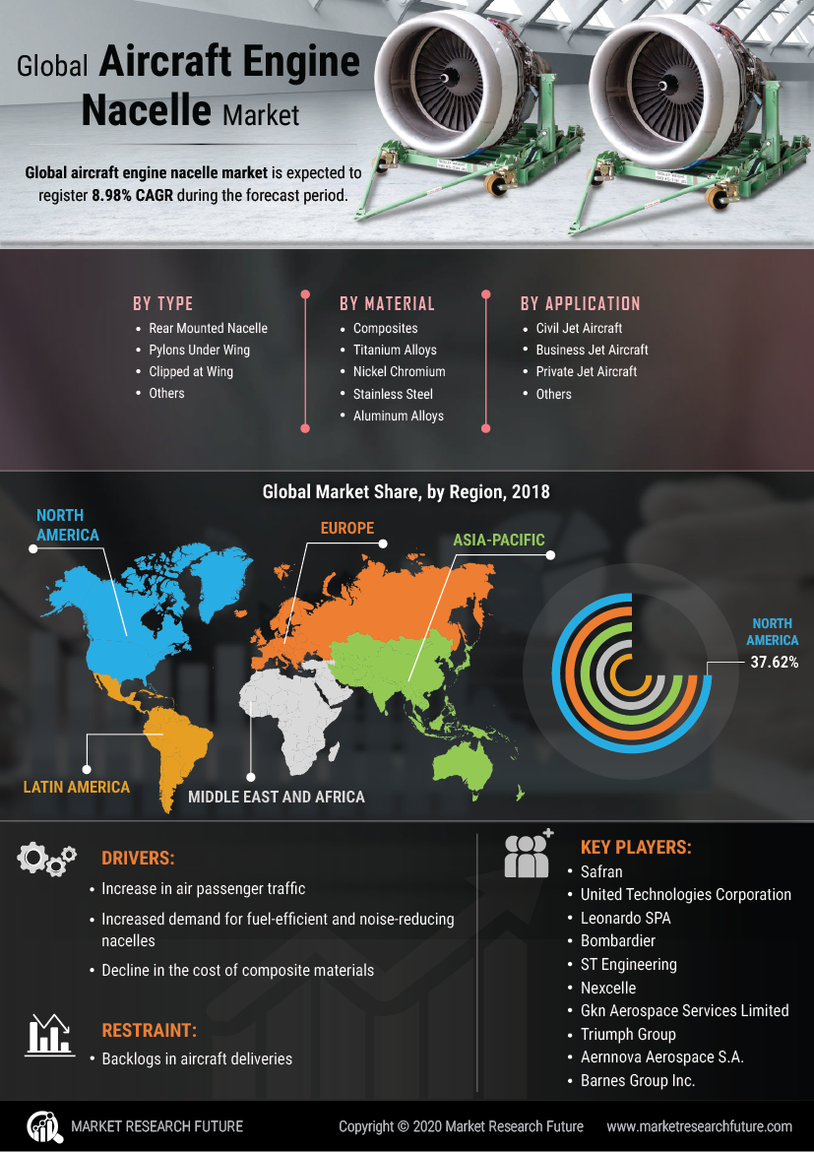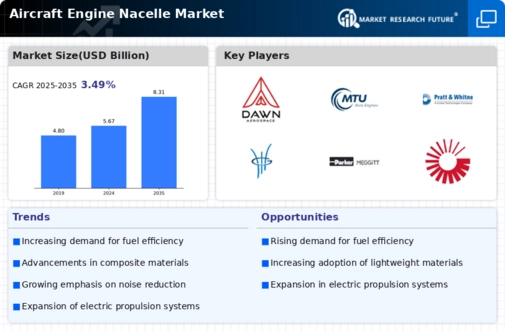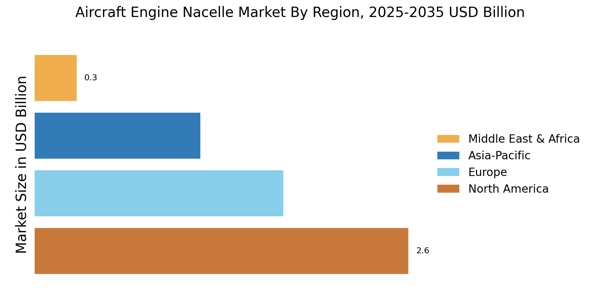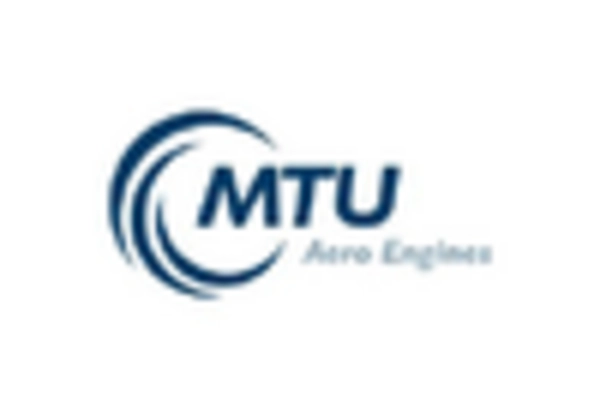Increasing Demand for Fuel Efficiency
The Aircraft Engine Nacelle Market is experiencing a notable surge in demand for fuel-efficient solutions. Airlines and manufacturers are increasingly prioritizing fuel economy to reduce operational costs and meet environmental regulations. The nacelle, which houses the engine, plays a crucial role in aerodynamics and overall efficiency. Recent studies indicate that advancements in nacelle design can lead to a reduction in drag, potentially improving fuel efficiency by up to 10%. This trend is further supported by the growing emphasis on sustainability within the aviation sector, prompting manufacturers to innovate and enhance nacelle technologies. As a result, the Aircraft Engine Nacelle Market is likely to witness significant growth driven by the need for more efficient aircraft designs.
Growth in Air Travel and Fleet Expansion
The Aircraft Engine Nacelle Market is poised for growth due to the increasing demand for air travel and the expansion of airline fleets. As global economies recover and consumer confidence rises, airlines are investing in new aircraft to meet the rising passenger demand. This trend is reflected in the projected increase in aircraft deliveries, with estimates suggesting a need for thousands of new aircraft over the next decade. Each new aircraft requires advanced nacelle systems, thereby driving demand within the Aircraft Engine Nacelle Market. Additionally, the replacement of older aircraft with more efficient models further contributes to market growth, as modern nacelles are designed to optimize performance and reduce environmental impact.
Technological Innovations in Nacelle Design
Technological advancements are reshaping the Aircraft Engine Nacelle Market, with innovations in materials and design processes leading the way. The introduction of lightweight composite materials has revolutionized nacelle construction, enhancing performance while reducing weight. This shift not only improves fuel efficiency but also contributes to lower emissions, aligning with global sustainability goals. Furthermore, the integration of advanced manufacturing techniques, such as 3D printing, allows for more complex and optimized nacelle designs. These innovations are expected to drive market growth, as manufacturers seek to leverage cutting-edge technologies to enhance the performance and reliability of aircraft engines. The Aircraft Engine Nacelle Market is thus positioned for a transformative phase, characterized by rapid technological evolution.
Collaborative Partnerships and Joint Ventures
Collaborative partnerships and joint ventures are becoming increasingly prevalent within the Aircraft Engine Nacelle Market. Manufacturers are recognizing the benefits of pooling resources and expertise to accelerate innovation and reduce costs. These collaborations often involve sharing research and development efforts, which can lead to the creation of more advanced nacelle technologies. For instance, partnerships between engine manufacturers and nacelle suppliers can result in optimized designs that enhance performance and efficiency. This trend is likely to foster a more dynamic and competitive landscape within the Aircraft Engine Nacelle Market, as companies leverage collaborative synergies to address the evolving needs of the aviation sector.
Regulatory Compliance and Environmental Standards
The Aircraft Engine Nacelle Market is significantly influenced by stringent regulatory compliance and environmental standards. Governments and aviation authorities are implementing increasingly rigorous emissions regulations, compelling manufacturers to develop nacelles that meet these requirements. The International Civil Aviation Organization (ICAO) has set ambitious targets for reducing greenhouse gas emissions, which directly impacts nacelle design and functionality. As a result, manufacturers are investing in research and development to create nacelles that not only comply with these regulations but also enhance overall aircraft performance. This focus on regulatory compliance is likely to drive innovation within the Aircraft Engine Nacelle Market, as companies strive to meet both legal obligations and market expectations for sustainability.


















Leave a Comment